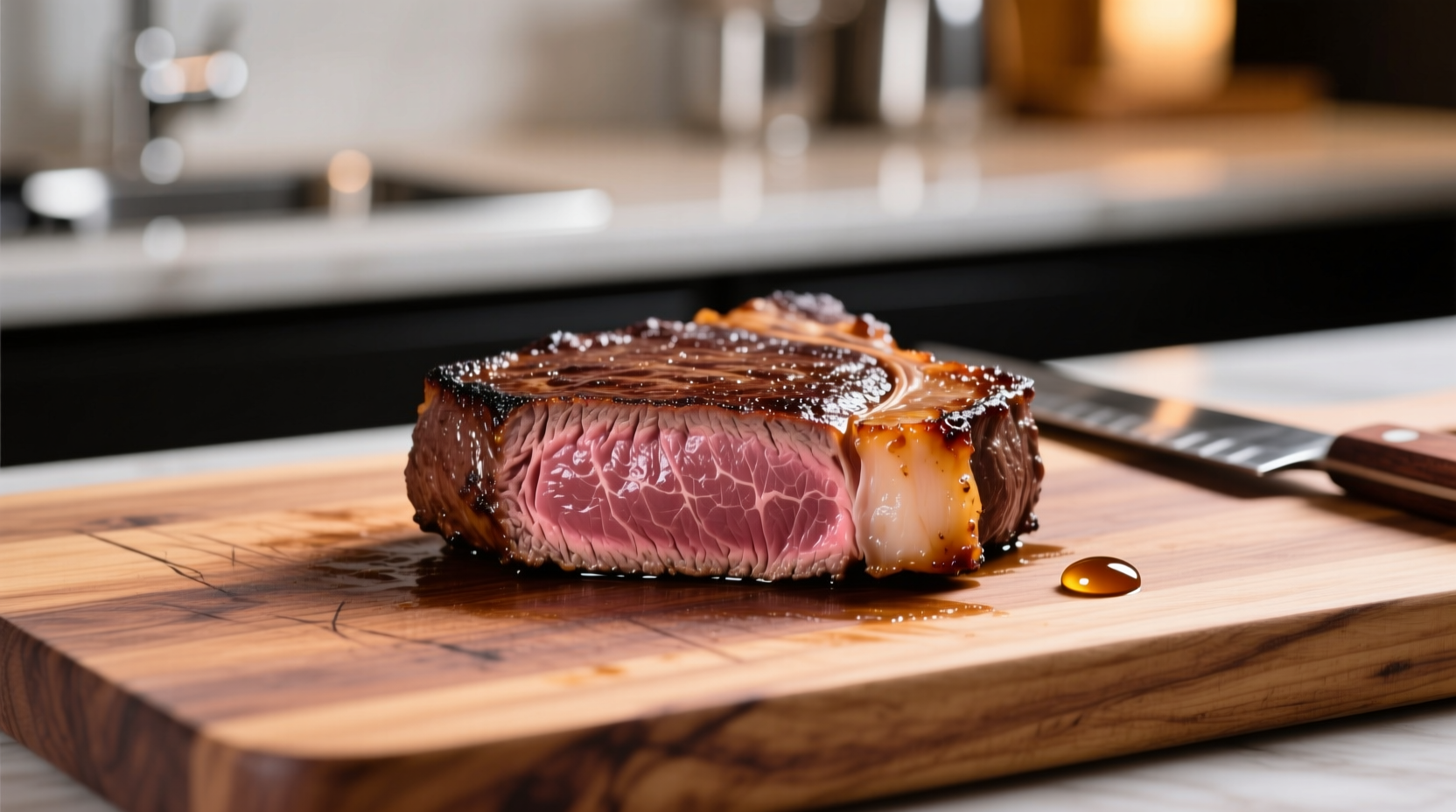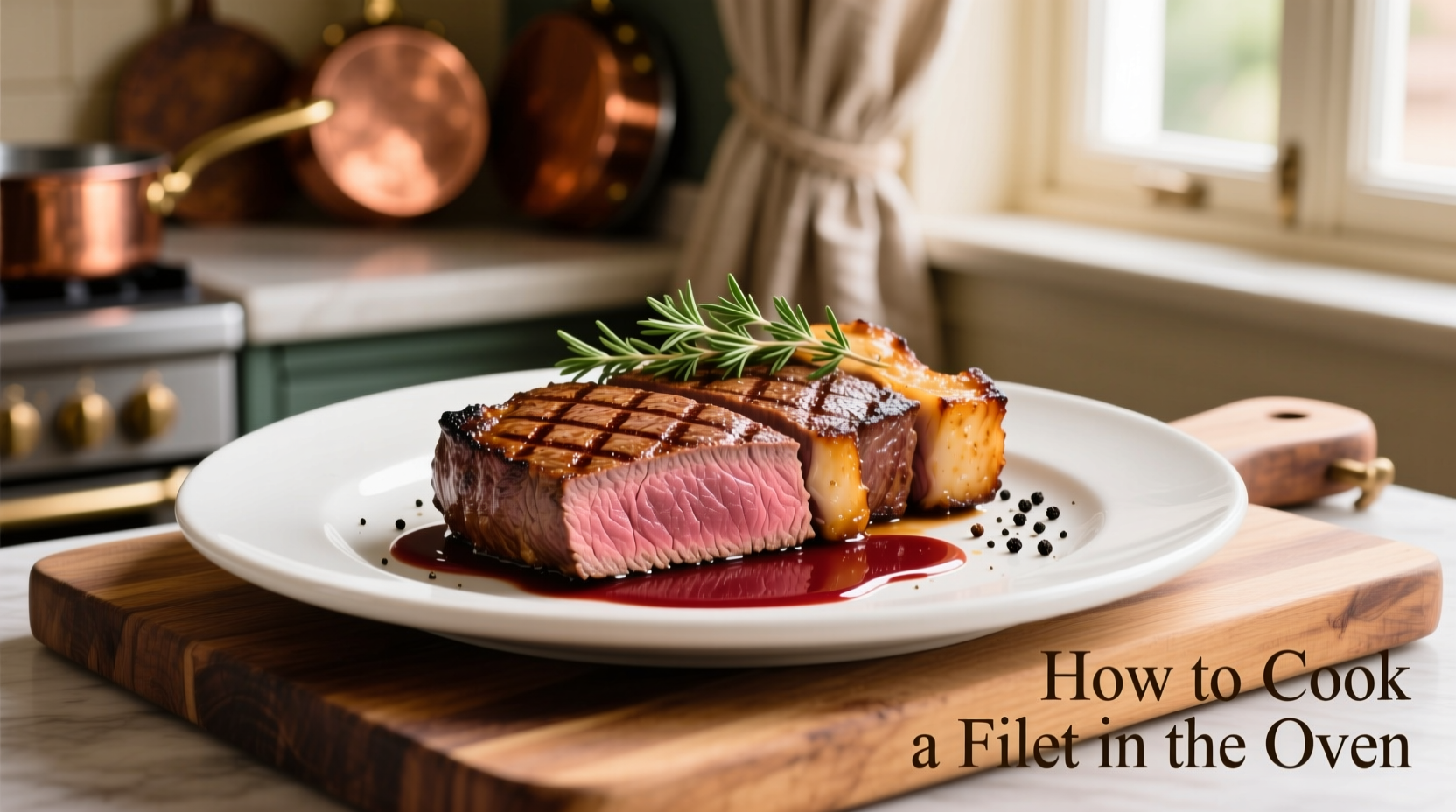The Foolproof Method for Perfect Oven-Cooked Filet Mignon
Nothing says special occasion like a perfectly cooked filet mignon. While many assume this premium cut requires grilling expertise, your oven can deliver exceptional results with the right technique. As a chef who's cooked thousands of steaks in professional kitchens, I've refined this method to guarantee tender, juicy filet mignon every time - no special equipment needed beyond your standard oven and a reliable thermometer.
Why This Oven Method Works When Others Fail
Most home cooks struggle with oven-cooked filet because they skip the critical sear step or rely solely on time estimates without checking internal temperature. The two-stage approach (sear then roast) creates that coveted crust while ensuring even cooking through the center. Unlike grill methods that risk uneven heat, your oven provides consistent ambient temperature for predictable results.
Essential Equipment Checklist
- Oven-safe meat thermometer (digital recommended)
- Heavy cast-iron or oven-safe skillet
- Wire cooling rack
- Aluminum foil
- Timber tongs (avoid piercing the meat)
Selecting the Perfect Filet for Oven Cooking
For optimal oven results, choose center-cut filets 1.5-2 inches thick. Thinner cuts (under 1 inch) overcook too easily in the oven's radiant heat. Look for bright red color with fine marbling - USDA Prime grade delivers the best flavor and tenderness, though Choice grade works well with proper technique. Always buy from a reputable butcher; according to USDA Food Safety and Inspection Service, proper handling from source to store prevents quality degradation.
Preparation: The 30-Minute Rule That Makes All the Difference
Remove filets from refrigerator 30 minutes before cooking. This critical step allows the meat to reach room temperature, preventing the common mistake of a cold center with overcooked exterior. Pat thoroughly dry with paper towels - moisture is the enemy of proper searing. Season generously with coarse salt and freshly ground black pepper on all sides. For best results, avoid marinades that can mask the delicate beef flavor.
Searing: Creating the Flavor Foundation
Preheat oven to 425°F. Heat cast-iron skillet over medium-high until smoking hot (about 5 minutes). Add 1 tablespoon high-smoke point oil (avocado or grapeseed). Carefully place filets in skillet, pressing gently for full contact. Sear 2-3 minutes per side until deep brown crust forms. For thicker cuts (1.75+ inches), sear the edges too by holding with tongs. This Maillard reaction creates complex flavor compounds that oven roasting alone cannot achieve.
| Doneness Level | Internal Temperature | Approx. Oven Time* | Visual Cues |
|---|---|---|---|
| Rare | 120-125°F | 6-8 minutes | Bright red center, cool |
| Medium-Rare | 125-130°F | 8-10 minutes | Warm red center |
| Medium | 130-135°F | 10-12 minutes | Pink center |
| Medium-Well | 140-145°F | 12-14 minutes | Small pink center |
| Well-Done | 150°F+ | 15+ minutes | No pink, firm texture |
*For 1.5-inch thick filets after searing. Always verify with thermometer.
The Roasting Phase: Precision Temperature Control
Transfer skillet directly to preheated oven. Roast until internal temperature reaches 5°F below your target doneness (temperature rises during resting). For a standard 1.5-inch filet, this typically takes 8-12 minutes for medium-rare. Never estimate - insert thermometer horizontally into the thickest part, avoiding bone or fat. The USDA Food Safety and Inspection Service confirms 145°F as the safe minimum for whole cuts, but most chefs prefer 125-135°F for optimal texture.

Resting: The Non-Negotiable Final Step
Transfer filets to wire rack and tent loosely with foil. Rest for 5-10 minutes (longer for thicker cuts). This allows juices to redistribute - skipping this step causes precious juices to spill out when cutting. During resting, carryover cooking raises temperature 5-10°F. For best results, rest on a rack rather than a plate to prevent soggy bottom.
Common Mistakes That Ruin Filet Mignon
- Skipping the sear - results in bland, boiled-meat texture
- Overcrowding the pan - lowers temperature, preventing proper crust
- Using wet meat - creates steam instead of sear
- Opening oven frequently - causes temperature fluctuations
- Cutting too soon - loses up to 40% of juices
When Oven Cooking Isn't Ideal: Context Boundaries
This method works best for filets 1-2 inches thick. For cuts thinner than 1 inch, finish under broiler instead of oven roasting to prevent overcooking. Filets thicker than 2.5 inches benefit from reverse searing (starting in oven, finishing with sear). Never attempt this method with frozen filets - always thaw completely in refrigerator first. According to culinary research from USDA National Institute of Food and Agriculture, proper thawing prevents uneven cooking and potential food safety issues.
Perfect Pairings for Your Oven-Cooked Filet
Complement your filet with simple preparations that don't compete with its delicate flavor. Classic pairings include:
- Garlic-herb butter melting over the warm steak
- Roasted asparagus or green beans
- Truffle mashed potatoes
- Full-bodied red wine like Cabernet Sauvignon
For special occasions, add a compound butter with blue cheese or shallots for extra richness without overwhelming the meat's natural flavor.
Mastering Filet Mignon: Professional Chef's Final Tips
After years of cooking premium steaks, here are my top insights:
- Season filets 45 minutes before cooking for deeper flavor penetration
- Add fresh herbs and garlic to the skillet during roasting for aromatic infusion
- Use the fond (browned bits) to make instant pan sauce
- Cook multiple steaks at once by rotating skillet position halfway through
- For extra-tender results, dry age filets in your refrigerator for 7-14 days











 浙公网安备
33010002000092号
浙公网安备
33010002000092号 浙B2-20120091-4
浙B2-20120091-4